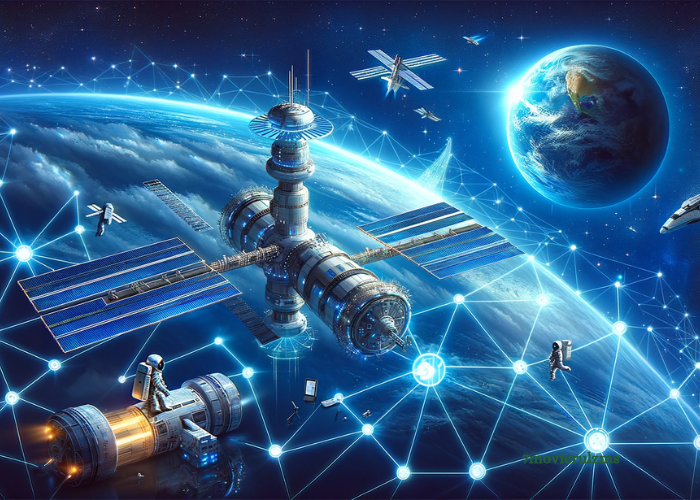Breakthroughs in Technology’s ever-evolving landscape and the quest for seamless connectivity have been a driving force behind countless innovations. As we delve into the latest breakthroughs, it becomes evident that the realm of connectivity is undergoing a revolution. From futuristic concepts to tangible advancements, this article will explore the cutting-edge technologies that are reshaping the way we connect and communicate.
5G Technology:
At the forefront of the connectivity revolution is 5G technology. This fifth-generation cellular network is set to redefine the way we experience the internet. With significantly faster download and upload speeds, lower latency, and enhanced reliability, 5G is poised to unlock a new era of connectivity. From ultra-high-definition video streaming to real-time augmented reality experiences, the applications of 5G are boundless.
Internet of Things (IoT):
The Internet of Things has transcended from a buzzword to a transformative reality. With an increasing number of devices becoming interconnected, IoT is fostering a seamlessly connected ecosystem. From smart homes with automated systems to industrial applications that optimize efficiency, the interplay of IoT is shaping a world where devices communicate intelligently, leading to enhanced productivity and convenience.
Artificial Intelligence (AI) and Machine Learning (ML):
AI and ML are playing pivotal roles in revolutionizing connectivity. These technologies enable intelligent decision-making, predictive analysis, and automation, resulting in a more responsive and efficient network. From optimizing network performance to enhancing security measures, AI and ML are instrumental in creating a connected environment that is not only fast but also adaptive and secure.
Edge Computing:
Edge computing is decentralizing data processing by bringing computation closer to the source of data generation. This reduces latency and improves the overall efficiency of connected systems. With applications ranging from autonomous vehicles to smart cities, edge computing ensures that data is processed quickly, enabling real-time responses and fostering a more robust and agile connectivity infrastructure.
Blockchain Technology:
Blockchain, known primarily for its role in cryptocurrencies, is making waves in the connectivity landscape. Its decentralized and secure nature is being leveraged to enhance the security of connected devices and transactions. Blockchain ensures the integrity of data and provides a transparent and tamper-proof framework, making it a promising technology for securing the future of connectivity.
Quantum Computing:
While still in its infancy, quantum computing holds the potential to revolutionize connectivity on an unprecedented scale. With the ability to process complex algorithms at speeds unimaginable by classical computers, quantum computing could break existing barriers in encryption, paving the way for ultra-secure and high-speed communication networks.
Augmented Reality (AR) and Virtual Reality (VR):
AR and VR technologies are not just confined to entertainment; they are transforming how we connect and collaborate. From virtual meetings to immersive training experiences, AR and VR are enhancing communication by providing a more engaging and interactive platform. These technologies are set to redefine the way we perceive and interact with the digital world, fostering a sense of presence and connectivity.
Wearable Technology:
Wearable devices are becoming increasingly sophisticated, serving as extensions of ourselves that keep us connected 24/7. From smartwatches that monitor health metrics to augmented reality glasses that provide contextual information, wearable technology is seamlessly integrating connectivity into our daily lives, making information and communication readily accessible.
Satellite Internet:
Satellite internet is breaking down geographical barriers, and providing connectivity in remote and underserved areas. With the deployment of low Earth orbit (LEO) satellites, companies are working towards creating a global network that ensures reliable internet access regardless of location. This technology is set to bridge the digital divide and bring connectivity to regions that were previously disconnected.
Mesh Networking:
Mesh networking is redefining the traditional concept of centralized connectivity. In a mesh network, devices collaborate to distribute data, creating a self-sustaining and resilient network. This approach is particularly beneficial in scenarios where traditional networks may fail, such as during natural disasters. Mesh networking ensures that even in challenging environments, connectivity remains intact.
Conclusion:
The revolution in connectivity is not confined to a singular breakthrough but is a harmonious interplay of various technologies. From the lightning-fast speeds of 5G to the decentralized security of blockchain, each innovation contributes to a more connected, intelligent, and responsive world.
As we witness these breakthroughs, it is essential to consider the broader implications and opportunities they bring. The revolution in connectivity is not merely about faster downloads or smoother streaming; it is about creating a foundation for a future where communication is seamless, secure, and accessible to all.
In conclusion, the latest breakthroughs in technology are not just shaping the future; they are revolutionizing how we connect with the world and each other. The journey towards a connected future is dynamic, and as these technologies continue to evolve, we can expect even more groundbreaking developments that will further enhance the way we experience connectivity in our daily lives.




